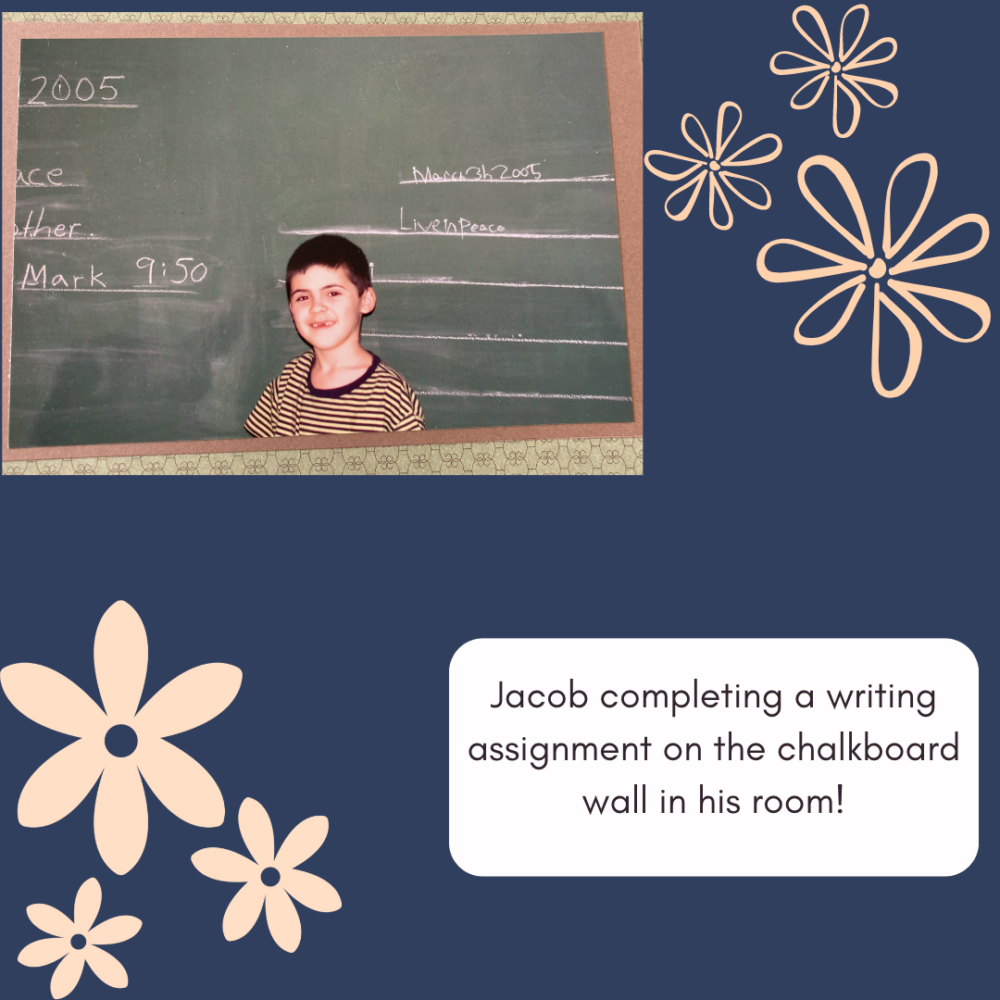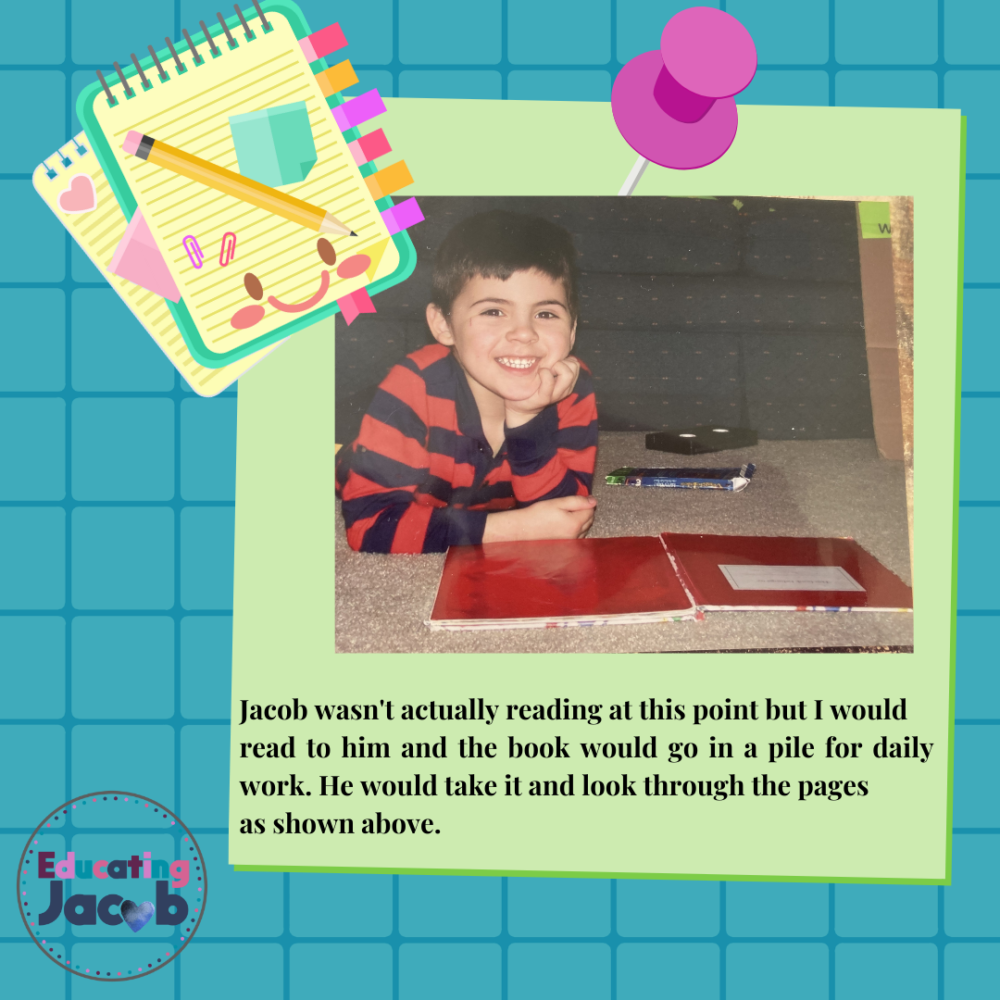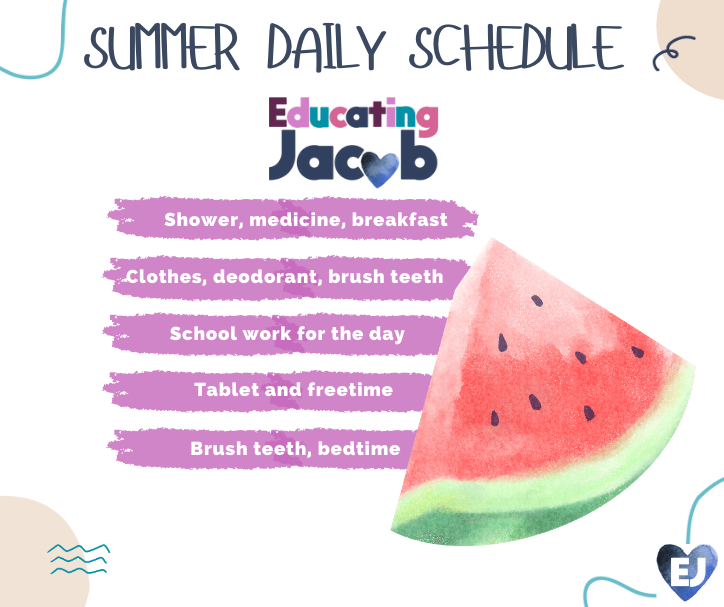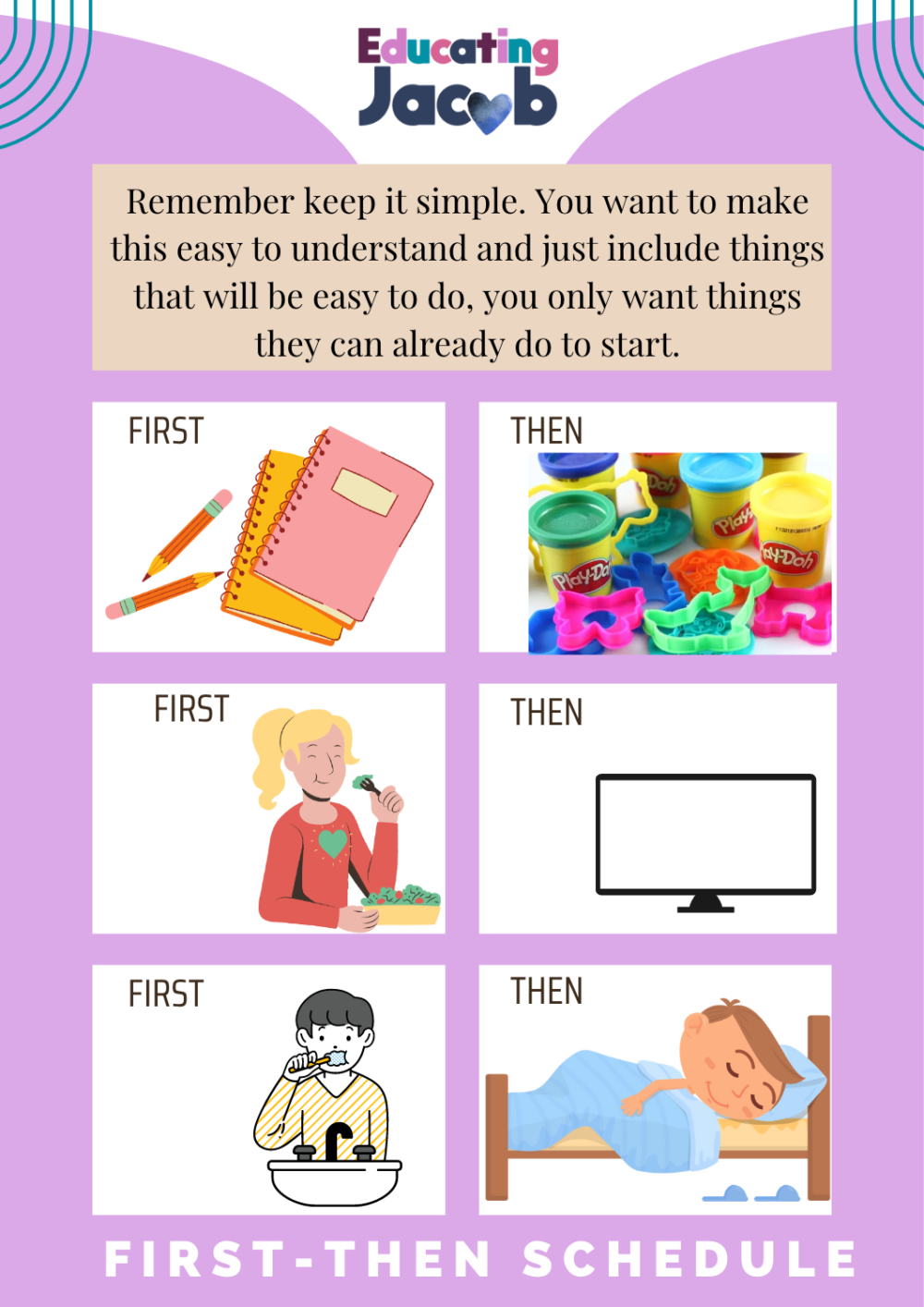How are using schedules improving our autistic child’s daily life?
Using schedules for our autistic child has been a game-changer in improving daily life. As parents, we constantly seek ways to help our children manage their emotions, transitions, and activities more smoothly. For Jacob, our journey began with countless meltdowns and a struggle to communicate his needs. But through the implementation of structured schedules, we discovered a powerful tool that not only brought calm to our home but also fostered independence and confidence in Jacob. In this blog post, we’ll share how using schedules has transformed our daily lives and offer practical tips to help other families navigate the complexities of autism. 🌟📅


The pictures in this blog post are Jacob through the years, Jacob doing a writing assignment above. After his writing, was his reading and both were on his schedule for the day. The last picture is when he was born, pictured here with his big brother Nick. At the very bottom of this blog post is a picture from his 21st birthday.

Using Schedules for the Autistic Child
Aren’t schedules easy? I’ll just write down a checklist, and boom, I’m done, right? Why do I even need a schedule? In all my years as a “boy mom,” “autism mom,” and special education teacher, I’m begging you: HAVE A WELL-THOUGHT-OUT SCHEDULE. Some key elements of a good schedule are:
- Easy to maintain.
- Understandable at a glance.
- Simple enough to change daily (if needed).
Above is Jacob completing a writing assignment from his schedule when he was 8 yrs old. His schedule was simple then with maybe 4 things on a list (or a row of pictures showing the activity) with something fun following actual work or chores.
Let me help you avoid some common pitfalls:
Once your child understands the concept of following a schedule, you can add to it slowly. Don’t expect things to go well the first couple of attempts. With Jacob he was very resistant to anything new and that continues to present day but the next time you ask him to do the task it’s no longer new. Yay!
Using schedules for autistic child gives success!
Problem: Controlling Emotions During Changes in Routine or Life Transitions
Unstructured downtime for children who struggle with change and emotions is not a good idea. You may be thinking, “My child shouldn’t have downtime?” Of course, they should! It’s unstructured downtime that can be the problem. Life is full of transitions. When transitions = meltdowns, try the following: No Schedule for Jacob to Use This Week? No Peace! Autism Challenges 🧩
– Use a Schedule: Help your child understand their day.
– Be Consistent: Using the schedule so it becomes a routine.
– Plan Ahead: You can add or remove things in the schedule (doctor appt., therapy, etc.).
I’ve found that my son, and my students, do better when they see what’s coming in their day. Be proactive and set everyone up for success! 🌟
Solution: Create a Simple Weekly Schedule
The goal is to set the child up for success. It doesn’t need to be an elaborate, time-consuming schedule. If you overdo it, then your schedule is just going to do more harm than good. It should be simple enough that they understand what to do and you can be consistent in how you use it.
How Can a Schedule Change Your Child’s Life?
Notice the smiles in the pictures where Jacob is completing his daily work. The schedules turned the chaos into calm. When he was allowed to just play and watch TV or movies, he did not transition well from one activity to another. When I would ask him to transition to something else or even ask a question, there would be attitude. He was unable to hold conversations and process the speech as people are speaking. Between sensory and processing issues, he also hyper-focused on whatever he was doing and didn’t like being interrupted. 📅
Tips for Creating Effective Schedules
Schedules can start off as simple as two pictures stuck on paper with Velcro. The first picture shows an activity for your child (like brushing teeth), and the second is something your child loves to do (like a favorite movie or TV show).
Once your child understands the give and take of the schedule, you can increase expectations and add more tasks. Jacob just turned 26, and he still loves the predictability of schedules, using them daily to have successful days. Currently, when Jacob completes his daily activities and chores for the week, he gets to order movies or something of his choosing from Amazon or eBay (his favorites). 📦
Overcoming Challenges for a Child with Autism
The initial challenges of creating and using schedules for autistic child are substantial. These kids tend to dislike change, and you’re essentially trying to change not only their way of communicating but also their daily habits.
While introducing schedules, you’ll mix in activities they love (like playdough or swimming) between activities that might be new or less appealing. But don’t worry—this phase doesn’t last long. Once they realize how predictable and fun schedules can be, you’ll be able to sit back and enjoy peaceful moments watching a happy child work. 🎨💧
Consistency is Key
However, one crucial piece of advice to avoid meltdowns or setbacks: consistency. Do not reward your child unless they follow the schedule. Consistency is the key to success in this journey. ✔️
Why Schedules Matter
A schedule can give a sense of control and success. Children who have difficulty with transitions and emotion regulation need our help. The schedule can give a sense of control and anticipation to face the day better. Success! 🌟
Practical Tips for Parents
– Keep it Simple: Once your child understands the concept of following a schedule, you can add to it slowly. Don’t expect things to go well the first couple of attempts. With Jacob, he was very resistant to anything new, but the next time you ask him to do the task, it’s no longer new. Yay!
– Use Visual Reminders: Sandwich the things your child dislikes between the things they like. If they give you push-back on an item, just point to the schedule. Use it as a visual reminder, and tell them, “If you want what comes next on the schedule then do this [task/chore/homework].”
Autism Schedule Example:
– Breakfast
– School work
– Chore
– Movie or break item
Let’s say the above is the start of Jake’s schedule. Breakfast is finished, and he’s asking for a movie. I point to the schedule without words showing the school work. Model what is next and refuse moving to the next item. Redirect without language showing the fun item is coming soon! The schedule isn’t negotiable, hold your ground, in the beginning, it’s tough but the payoff is worth it!
Using the Schedule for a Child with Autism
The schedule needs to be easy to follow. Have clear expectations. You need to be consistent when using a schedule. You can’t put things on your child’s schedule they don’t know how to do on their own. My classroom schedule was so well-modeled that my students could guide my substitute teacher any day of the week. I wanted the substitute and my kids to have a great day if I had to be out. So, I put in the time and created schedules that they enjoyed using even in my absence. How Jacob has success daily without anxiety. #autismchallenges
The Purpose of Schedules
– Independence: Have the child understand their place and expectations within the family.
– Reduced Anxiety: In school, the student needs to understand their place within the classroom and the expectations of the teacher.
– Simple and Clear: The schedules need to be simple and easy to look at and understand at a glance.
– Easy Instructions: You need simple instructions for small children or anyone who has a learning disability.
By focusing on creating structured, easy-to-follow schedules for the autistic child. Parents can help their children with autism navigate their days more smoothly, reduce meltdowns, and foster a sense of independence and success. 💪🌈
-

Jacob on his 21st bday with his favorite person, Mrs. Gwen! 
Autism Coaching, part of the CEO Coaching Community. Click here for a free discovery call to see if you would benefit from coaching sessions with me! https://educatingjacob.com/contact/





